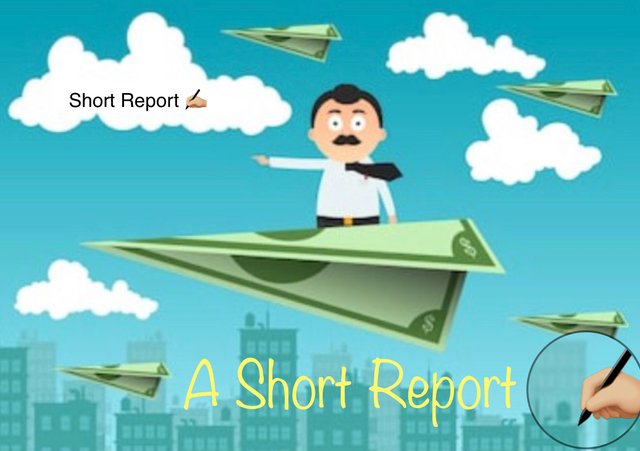Modern Banking and Decentralized Finance: concepts and terms

First let’s look at important terms and concepts in banking and decentralized finance.
Credit
When people purchase things they pay cash or credit. Cash is fiat or currency like Dollars, Euros, Yen. Credit is of course the use of credit cards and for larger purchases you get a loan. The loans have terms which include length and a fee for borrowing money called interest. There can also be fees or charges for making the loan called origination fees or loan fees. The loans like car loans or home loans are made by a bank. A bank provides you “credit” in the form of credit card use, which is a loan, specifically an unsecured loan. A bank is essentially a “Credit Facility” , it provides “Credit” which allows commerce, buying goods like cars and homes, plus consumer goods. The bank makes money by loaning money and charging fees.
Security or Collateral
A bank provides you “credit” in the form of credit card use, which is an unsecured loan. This is different from a secured loan like your car or home loan. A credit card is secured by your “promise to pay” but not secured or backed up by any asset. Your car loan or home loan is secured by the car or the home. The car or loan are the “security” the bank needs to make the loan. You promise to give them the car or home, if you can’t pay back the money you borrowed to buy the car or loan. The other word for security is collateral. The loan is a contract between you and the bank. The bank agrees to loan you money, you agree to pay it back, you agree to provide security to the bank for this loan by agreeing that the bank can seize and sell your home or car if you can’t pay the loan back. The home or car is called security, so the loan is called a secure loan. The home or car is also called collateral, so the loan is also called collateralized.
Debts
The loan you get from the bank is also called a debt. Now if you take a step back from this you see where the terms credit, credit facility, loan, security, collateral, secured loan and collateralized loan come from. And now you know what they mean.
Stability Fees & Collateralized Debt Products
Let’s take this process a few steps forward and explain stability fees and collateralized debt products. A car factory makes cars, a bakery makes bread and a bank makes loans. In other words the the product of the car company is cars, the product of the bakery is bread and the product of a bank is loans. We have learned above that a bank makes secured and unsecured loans. We also learned that the loan is secured when it is backed by a promise to turn over the car, home or other asset to the bank if the borrower of the loan can’t pay the loan. This asset which secured the loan through the loan contract is also called collateral. The loan secured by collateral is referred to as a secured loan, but also as a collateralized loan.
CDP
Now take a deep breathe. First, remember above when we said a loan you have for your house or car was called a debt? Yes it’s a contract which says you owe money to the bank every month until you pay back the money you borrowed to buy the car or house. It’s called a Debt. Remember above when we said the product of a bakery was bread and the product of a bank was loans? Well now you understand loans are considered secured and secured loans are called also called collateralized loans. Let’s put all that together in the next section.
Putting it all together
Banks provide Credit.
One for of Credit is a loan.
Loans equal Debt
Loans equal a Product.
Loans are secured or Collateralized.
Loans are called Collateralized Debt Products.
Collateralized Debt Products are called CDPs.
We are almost done. Congratulations to those who read this far.
Loan to Value Ratio
Traditionally, a bank doesn’t loan you $10,000 USD on a new car selling for $10,000. They only loan you a percentage of what the car or home is selling for and you pay the rest. It’s usually 10-40 percent. The loan however is secured with the entire asset, not just 60%. So although the bank may only invest 80% of the assets value, if you stop making payments the bank seized and sells the entire asset 100% leaving you with nothing. The bank takes some risk, loaning you $$8000.00 USD on a vehicle worth $10,000, but you also risk $2000.00 and you lose it if you stop paying on the loan. The bank decides how much to loan you based on a standard loan to value ratio, which depends on what type of asset the loan is for, such home, car or securities. This loan to asset ratio could be 80%. Which means the bank will loan you $8000.00 on a $10,000.00 dollar car.
Collateralization Ratio
In decentralized finance their are no banks, but there are Credit Facilities. These credit facilities make loans called CDPs or collateralized debt products. They don’t use a loan to value ratio, they use something called a Collateralization Ratio. It is the inverse or opposite of a loan to value ratio. In a loan to value ratio you create a fraction with the loan value on top (numerator) and asset value on bottom. (Denominator). I remember this by reminding myself that banks slwsys have the advantage, thus they are always in top. In a Collateralization ratio the value of the asset is on top, and the loan is on the bottom. I can remember this because in decentralized finance the borrower is suppose to have the advantage or be on on top. The top is a the value of the asset in fiat, like dollars and the bottom is the value of the loan. The fraction usually is greater then one. For example in the MakerDao it’s 1.5. This fraction by current convention referred to as a percentage and currently it is usually 150%. So this means the value of your collateral in a Collateralized Debt Product must be 150% of your loan. So if your loan is for $100 your collateral must be worth $150. That’s a 150% collateralization ratio. Next we shall tackle liquidation.
Liquidation
The final thing we need to understand in decentralized finance is called liquidation. This is to me a fun term. It’s fun because it is a term which “distills this entire process down to its very essence”, or “lays bare the bones”. But I digress into idioms, another form of babble, so please forgive me. Now as we saw above, due to the loan to value ratio in traditional banking and the collateralization ratio of decentralized finance, the bank in traditional banking or the credit facility in decentralized banking the bank loaned you around 75-80 percent of the collaterals value. But it is allowed to seize and sell the entire collateral if you fail to pay. If you don’t pay your loan, the bank takes your asset, the car or your home. This process is called repossession in America in the case of a car or foreclosure in America the case of your home. And they sell it at a below market price to get their money back. The bank loaned you cash. That’s what they want back!
Liquidity
Cash has a property called liquidity, which means amongst other things you can buy anything with it. Or you can loan it to people to buy things with. The bank isn’t in the real estate business, they are in the money lending business. They lend money out and money comes back to them in the form of loan payments. If you can’t pay, they seize the security and sell it to get their cash back. Your asset be it a car or home is valuable, but it isn’t liquid. You can’t take your ownership papers to the store to buy food and you can’t send your child ownership papers to pay her bills in an emergency. You need something liquid like cash. So the process of changing your liquid asset into liquid cash is called Liquidation. So now you know the terms common to banking, decentralized finance and how they were derived.
Written by Shortsegments. ✍🏼.

Please Support my blog by upvoting or sending me cryptocurrency to one of my wallets below
Thank you
BITCOIN BTC

Thank you
ETHEREUM

Thank you
LITECOIN

Thank You
DASH

Thank you
BITCOIN CASH

Thank you
BAT; BASIC ATTENTION TOKEN

Please follow @shortsegments Twitter Feed Here

Title: Modern Banking and Decentralized Finance: concepts and terms
Tags: #banking-terminology #personal-finance #decentralized-finance
I think protection and security are important things in a person's life
Competition will be intense for those who provide the best service
In the modern banking system, banks have the power to create money. Not surprising that the holders of real assets are indebted to banks who can create money out of thin air. The fractional reserve banking system.